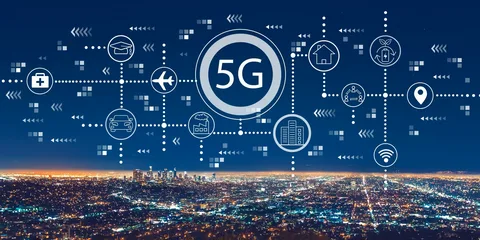Introduction
In the ever-evolving landscape of telecommunications, the advent of 5G technology marks a pivotal moment that goes beyond mere connectivity. It promises a revolutionary shift, redefining the way we communicate, access information, and interact with the digital world. This article explores the game-changing potential of 5G technology, delving into its key features, applications, and the transformative impact it is poised to bring to various industries.
Unveiling the Power of 5G
1. Unprecedented Speed and Bandwidth
a. Gigabit Speeds:
At the core of 5G technology is its ability to deliver unprecedented speed, reaching up to gigabit per second rates. This enables lightning-fast downloads, seamless streaming, and near-instantaneous responsiveness in online activities.
b. Massive Bandwidth Capacity:
The expanded bandwidth of 5G allows for a significant increase in the number of devices that can be connected simultaneously. This is essential for the growing ecosystem of connected devices in the Internet of Things (IoT) era.
2. Low Latency for Real-Time Interactions
- Reduced Latency:
One of the standout features of 5G is its remarkably low latency. Latency refers to the time it takes for data to travel from the source to the destination. With 5G, latency is reduced to a fraction of a second, making real-time interactions, such as online gaming and video conferencing, incredibly smooth.
3. Enhanced Connectivity in Dense Areas
a. Improved Connectivity in Urban Areas:
5G is designed to handle connectivity challenges in densely populated urban areas. Its advanced infrastructure ensures reliable and high-speed internet access even in crowded environments with a large number of connected devices.
Transformative Applications Across Industries
1. Healthcare
a. Remote Patient Monitoring:
In healthcare, 5G enables remote patient monitoring with real-time data transmission. This is particularly crucial for patients with chronic conditions, allowing healthcare professionals to monitor vital signs continuously.
b. Augmented Reality (AR) in Surgery:
5G’s low latency is a game-changer in surgery, where augmented reality can be used to overlay critical information during procedures. Surgeons can access real-time data without delays, enhancing precision and efficiency.
2. Manufacturing
a. Smart Factories:
In manufacturing, 5G facilitates the concept of smart factories. With enhanced connectivity and low latency, machines and robots can communicate seamlessly, optimizing production processes and enabling predictive maintenance.
b. Internet of Things (IoT) Integration:
The massive bandwidth of 5G supports the integration of a vast number of IoT devices in manufacturing. This results in efficient monitoring, automation, and data-driven decision-making.
3. Transportation
a. Connected and Autonomous Vehicles:
5G is a critical enabler for connected and autonomous vehicles. The low latency ensures real-time communication between vehicles, traffic infrastructure, and the cloud, enhancing road safety and traffic management.
b. Smart Transportation Systems:
In smart cities, 5G technology contributes to the development of intelligent transportation systems. These systems optimize traffic flow, reduce congestion, and enable dynamic rerouting based on real-time data.
Challenges and Considerations
1. Infrastructure Deployment
a. Building a Comprehensive Network:
The widespread adoption of 5G requires a significant investment in infrastructure. Building a comprehensive network of 5G towers and infrastructure is a logistical and financial challenge that many regions are actively addressing.
2. Security Concerns
a. Ensuring Cybersecurity:
As 5G becomes the backbone of critical infrastructure, ensuring cybersecurity is paramount. Protecting networks from cyber threats and vulnerabilities is an ongoing challenge that demands continuous innovation in security measures.
Future Perspectives and Global Collaborations
1. International Collaboration
a. Global Standardization Efforts:
International collaboration and standardization efforts are essential for the seamless integration of 5G on a global scale. Harmonizing technical standards ensures interoperability and facilitates a cohesive global 5G ecosystem.
2. Innovation and Research
a. Advancements in Technology:
Continuous innovation and research are crucial for the evolution of 5G technology. Advancements in areas like beamforming, network slicing, and edge computing will further enhance the capabilities and applications of 5G.
Conclusion
5G technology stands at the forefront of a transformative wave that extends far beyond faster internet speeds. Its low latency, massive bandwidth, and connectivity enhancements make it a catalyst for innovation across industries. As the world embraces the era of 5G, addressing challenges, ensuring security, and fostering global collaborations will be pivotal in unlocking the full potential of this game-changing technology. The journey towards a fully connected, intelligent, and responsive digital future has just begun, and 5G is the engine propelling us into an era of unparalleled connectivity and possibilities.
